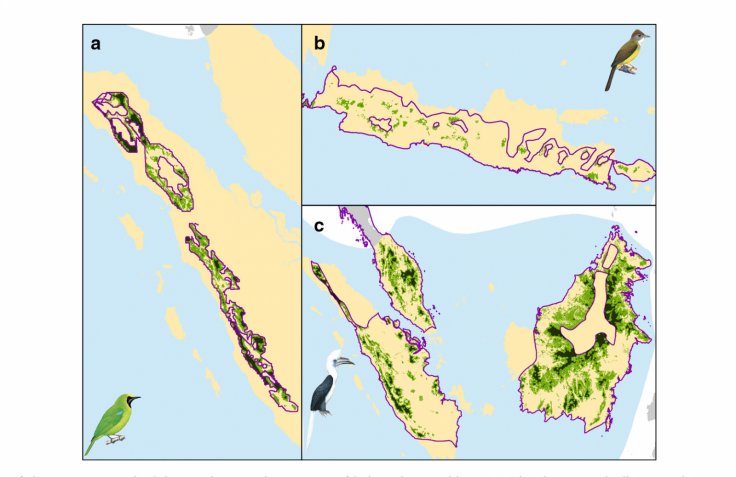
While many environmental activists have stated several facts related to the changing weather, pollution and critically endangered animals over the years, the impact of deforestation and illegal wildlife trade on tropical biodiversity is still underestimated. Now, a new study showed that if these issues are not taken under control by the concerned authorities then it could cause the extinction of some South-east Asian bird species by the end of this century.
A group of researchers have recently discovered that hunting or poaching in Sundaland, which includes Borneo, Sumatra as well as Java and the residence of 308 forest-dependent bird species, has caused much higher population loss of the forest habitats in that region than when accounted for separately.
Scientists from the National University of Singapore (NUS) and University of Sheffield have stated that 77 out of those 308 bird species, including Melodious Bulbul, Javan Leafbird and Silvery Pigeon, are now trapped to become pets, food or products.
The research paper, which was published in the Nature Communications journal. While the International Union for Conservation of Nature (IUCN) tracks the different threats to wildlife, the researchers stated that these issues are interconnected and the combined impact could be more dangerous than what is estimated till now.
The study showed that from 2000 and 2015 almost nine out of 10 bird species had experienced an average habitat loss of 16 percent due to deforestation. Those 77 bird species have experienced a mean population decline of 37 percent.

In terms of the decline in population, while the combined impact of deforestation and exploitation is estimated to be 23.9 percent for all those 308 species, the percentage is 51.9 for the 77 commercially valuable species.
The IUCN has listed 27 bird species as critically endangered, endangered or vulnerable, the study researchers suggested that the numbers should 51 now. They also added that 50 to 90 South-east bird species whom they examined including Ruby-throated Bulbul and White-crowned Hornbill might get extinct by 2100.
William Symes, the lead author of the study and a PhD graduate from NUS said that the recent extinctions such as "the passenger pigeon and the dodo present common traits like the simultaneous combination of habitat loss and active hunting. This fatal combination of ingredients is present for dozens of unique bird species in Sundaland."
In addition, Dr David Edwards from the department of animal and plant sciences at the University of Sheffield said that urgent policies should be introduced to restrict the deforestation process and cage-bird trade needs to be slow down, otherwise many species will be lost soon.
"Failing to account for these combined threats can lead to a major underestimation of threats in the IUCN Red List assessments," Dr Edwards stated.
Roman Carrasco, an assistance professor at NUS's department of biological sciences said that this assessment can be applied to other tropical forests, who are facing similar issues outside South-east Asia. He also added that it is possible to limit the extinction of bird species, but for that coordinated efforts are needed to restrain the commercial exploitation as well as the deforestation process.









